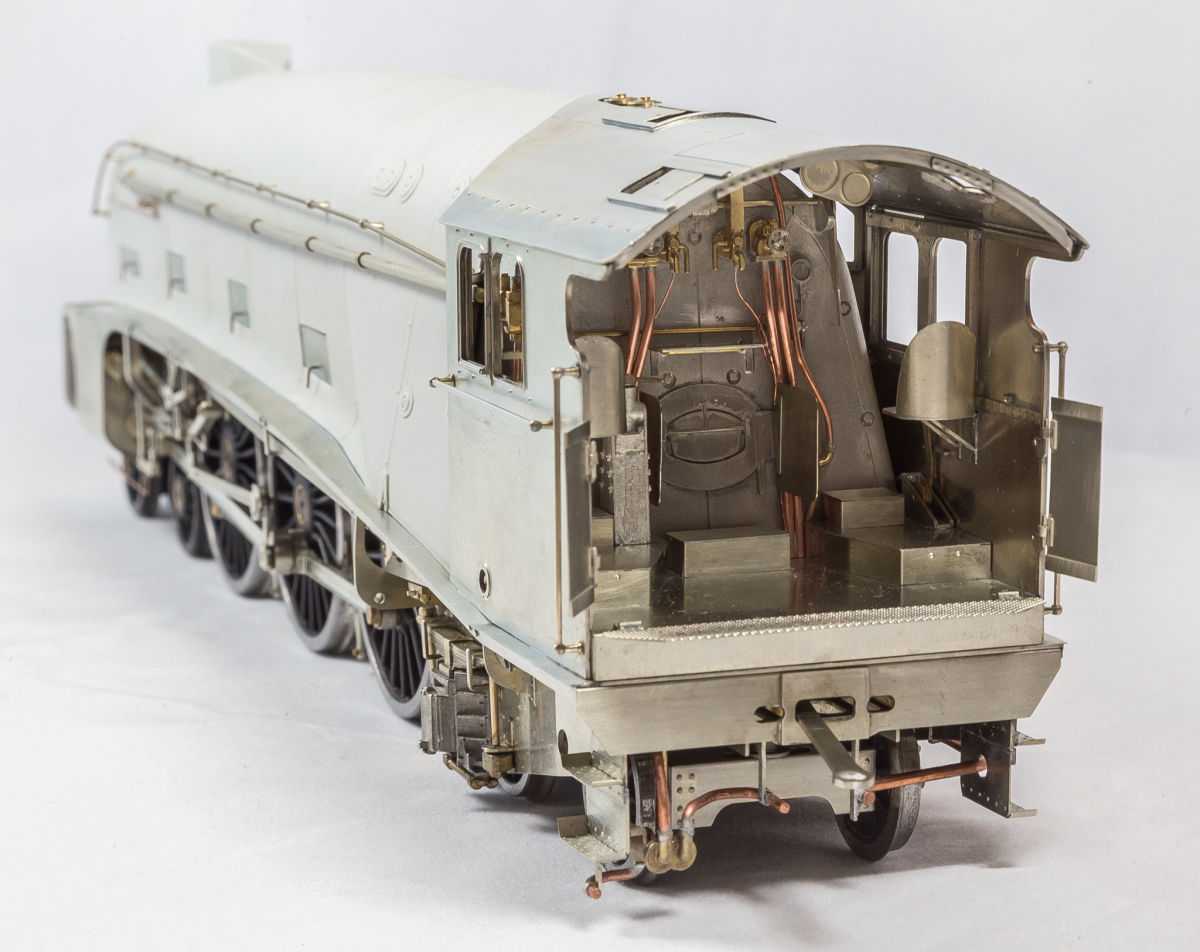LNER GRESLEY W1 CLASS LOCOMOTIVE
BRIEF HISTORICAL DETAILS
The engine was originally built as a water tube experimental locomotive, when those trials finished and the boiler became unserviceable it was decided to rebuild the engine during 1937 to a more traditional form. The result was a locomotive very similar to the A4 class and they shared many common components.
The most obvious differences being the extended rear frames to accommodate the extra carrying wheels and the enlarged cab. The replacement boiler was similar to the P2/3 class but with pressure raised to 250 lbs/sq" and had an enlarged firebox fitted. The only other external difference was the cylinder casing which was bulged to clear the larger 20" dia cylinders.
The engine survived until June 1959 and became infamous for it's derailment at Peterborough on 1st September 1955 due to a cracked bogie frame. Fortunately the derailment was at slow speed and it was repaired and returned back to work it's then regular schedule between Doncaster and Kings Cross.
For a detailed history of this class Part 6C of Locomotives of the LNER published by the RCTS is essential reading. An other valuable sources of information and photographs is Yeadon's Register of LNER Locomotives - Volume Two - Irwell Press
VARIATIONS POSSIBLE WITH THE KIT
Lamp bracket - smoke box door. At some point 1940/2 the top lamp bracket was moved 9" down the door.
Side skirting. This was removed in April 1942, the kit does not include the side skirts fitted previous to this date.
Frame guard irons. These were fitted at rebuilding but later removed, believed to be around Aug 53, at this point the outside drain pipes were cut back level with the leading bogie wheel hub. The drains were later cut back to simple J shaped drains around late 1955.
TENDERS
The original corridor tender was retained during rebuilding, though the front side sheets were modified to suit the new cab profile. Stream line plating was added to the front end and around the water filler hole (later removed Jan 38).
From May 1948 a standard A4 streamlined non corridor tender was fitted, this tender was retained through out except for a short period during July 1953 when the engine had a streamlined corridor tender temporarily fitted.
LIVERIES.
On rebuilding the engine carried the standard Garter blue with dark red wheels, numbers and letters were gold with red trim. In 1942 the engine received the war time black livery with simplified N E on the tender.
From December 1946 the original Garter blue livery was applied, which was retained until January 1951, though the number was changed to 60700 in June 1948 and the tender inscription to BRITISH RAILWAYS.
During January 1951 the engine was repainted in the darker BR blue livery with black and white lining, the tender inscription changed to the large early BR emblem. This was superseded by the standard BR green livery with orange and black lining in May 1952. The tender emblem remained unchanged until May 1957 where it was altered to the later smaller emblem.
COMPONENTS NOT SUPPLIED
Wheels
Bogie wheels 3' 2" diameter, 10 spoke, 5/32" diameter axle, Slater's Ref.7838GMF
Driving wheels 6' 8", 20 spoke, 3/16" diameter axle, (3), Slater's Ref.7880G
Pony truck 3' 8", 12 spoke, 5/32" axle, (1), Slater's 7843NEMF.
Motor/Gearbox. A Canon motor with a SDMP 40L/15 gearbox (available from Finney7) or an alternative such as an ABC VML2 gearbox.
Crankpins. Heavy duty crankpins are available from Finney7.
